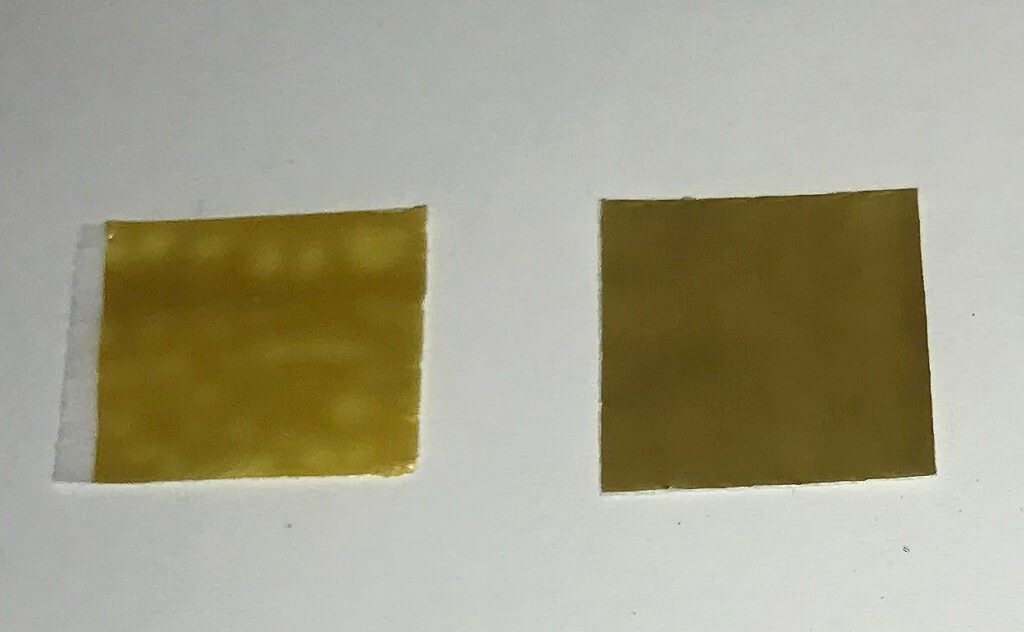Infection
Nitric Oxide-Infused Material Tackles Infections
Scientists from Colorado State University and the University of St. Andrews in Scotland have created a versatile and efficient antimicrobial material suitable for coating medical devices intended for internal use in the body.
Membrane films containing metal-organic frameworks like those shown here that produce nitric oxide could provide antibacterial properties in medical devices. Image Credit: Colorado State University
This project integrates earlier research from Colorado State University and the University of St. Andrews, focusing on metal-organic frameworks. These frameworks are three-dimensional crystalline materials composed of metals and linkers, known for their porous structure and stability in water.
Through collaborative efforts, the research teams merged their respective frameworks, creating a single thin-film membrane designed to release nitric oxide gradually. Nitric oxide has known antimicrobial properties and is being explored for various medical applications, including its potential use in coatings for medical devices.
Nitric oxide, a widely recognized antimicrobial agent naturally present in the body, not only can eliminate bacteria and fungi upon contact but also maintains its antimicrobial activity over an extended period.
The research was published in the November issue of ACS Applied Materials & Interfaces.
Preventing Infections Without Drugs
Professor Melissa Reynolds, a Chemistry expert who spearheaded the research at Colorado State University within the College of Natural Sciences, noted that applying this material as a coating on implanted devices could offer a non-drug-based approach to preventing infections in routine surgical procedures like hip replacements or shunts that have continuous contact with the skin. The American Academy of Orthopedic Surgeons reports that around 1% of patients undergoing hip or knee replacements may experience infections after the operation.
Non-elective surgery is a key area for this work because they are increasingly common and many people getting them have underlying medical issues that increase the chances for infection. Additionally, many patients may not realize they have developed an infection from the surgery until much later. Using this material could help keep those devices running smoothly inside the body and prevent the need for additional surgeries.
Melissa Reynolds, Professor, Chemistry, Colorado State University
Current medical devices often incorporate silver coatings as a means to prevent infections. However, there is a concern about the potential for high doses of silver leaching into the body over time. Moreover, silver is not a viable option for certain types of implanted devices that bear loads or need support.
Professor Reynolds pointed out that although drugs can be effective in treating infections, they have a limited duration of effectiveness and may be associated with side effects. The antimicrobial material developed in this research, based on nitric oxide release, offers a promising alternative that overcomes some of these limitations.
New Imagining Techniques Speed Research Into Antimicrobial Material
In the process of creating the thin-film material, the research team examined three membranes featuring distinct combinations of metal-organic frameworks. They employed a novel cryogenic imaging technique, which aided in identifying the most effective ratios and methods for releasing nitric oxide.
This approach allowed the researchers to optimize the composition of the material and enhance its ability to gradually release nitric oxide, a key factor in its antimicrobial properties.
The preliminary data shows the material is effective at eliminating common bacteria such as staph or E. coli. We also found that a very small amount of this material by weight percentage is still very effective at killing bacteria. That is promising for future applications and feasibility outside of a university test setting.
Melissa Reynolds, Professor, Chemistry, Colorado State University
Professor Reynolds mentioned that the research team plans to continue their investigations into delivery methods and explore the transition of the material from its current thin-film state to a form that can be applied to various devices, including pacemakers.
Any implantable device is a candidate for this technology, and we think it will be inexpensive to manufacture. We haven’t found any limitations yet and are looking forward to working with companies to develop this approach.
Melissa Reynolds, Professor, Chemistry, Colorado State University
Journal Reference
Ettlinger, R., et al. (2023). Mixed Metal–Organic Framework Mixed-Matrix Membranes: Insights into Simultaneous Moisture-Triggered and Catalytic Delivery of Nitric Oxide using Cryo-scanning Electron Microscopy. ACS Publications. doi/10.1021/acsami.3c11283.
Source: https://www.colostate.edu/

